2025 ASJ Autumn Conference, Shimonoseki
Captain’s Log, Stardate 60937.7
Last week, I set course for Shimonoseki-City (下関市), in Yamaguchi Prefecture, to attend the 2025 Autumn Meeting of the Astronomical Society of Japan. Shimonoseki is a city with deep historical significance—best known as the place where the Treaty of Shimonoseki (马关条约) was signed, marking the end of a war and the beginning of a new chapter in East Asian history.
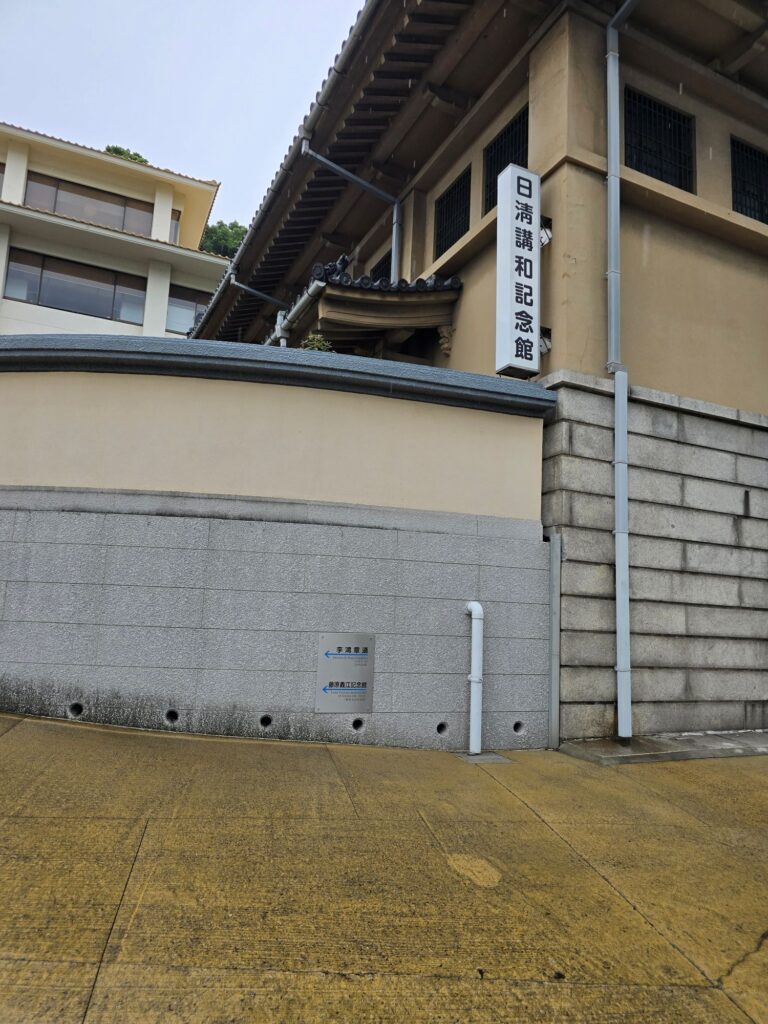
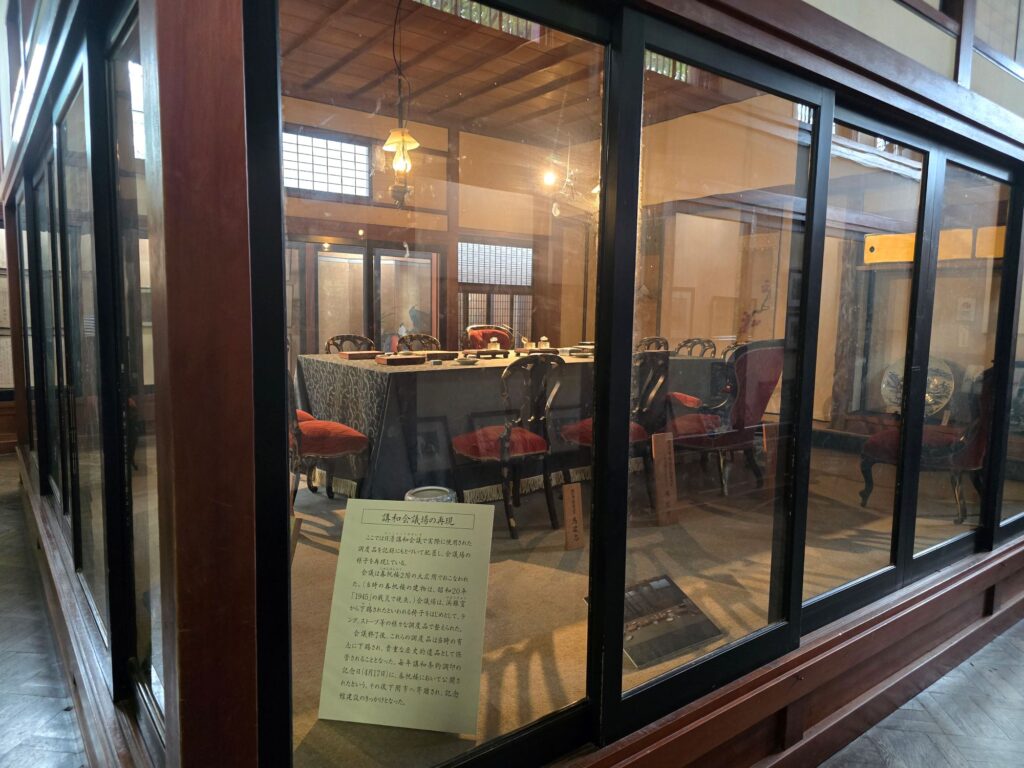
Figure 1: the Memorial House of the Treaty of Shimonoseki, inside the house, there is one room showing the scene when the Treaty was signed.
Finding accommodation in Shimonoseki itself proved difficult, with most hotels filled quickly for the conference. Instead, I secured lodging near Kokura Station in Kitakyushu, which turned out to be a fortunate choice. The area was lively, full of energy, and offered a welcome balance to the academic intensity of the week.
The conference itself was, as always, a chance to reconnect with fellow explorers of the cosmos. I met many old colleagues, exchanging updates on our research voyages. Among the presentations, I was particularly struck by work describing the evolution of disk structures across different epochs, and another predicting the formation of central cavities in circumplanetary disks—both topics close to my own interests. Conversations between sessions even revealed the possibility of a new collaboration, a reminder that conferences are as much about building connections as they are about presenting results.
On the final day, I set out for a different kind of exploration—deep beneath the Earth rather than high among the stars. I visited Akiyoshidō (秋芳洞), located within the Akiyoshidai (秋吉台) Karst Plateau. At over 11 kilometers in length, it is the longest solution cave in Japan, with a river running through its vast chambers. Inside, the formations were extraordinary: towering stalactites, delicately carved terraces, and multi-tiered pools shaped by millennia of flowing water. Standing among those stone structures, I couldn’t help but feel the same sense of awe I do when observing cosmic landscapes. The cave, in its silent grandeur, is like a geological galaxy—its “stars” etched in stone and water.
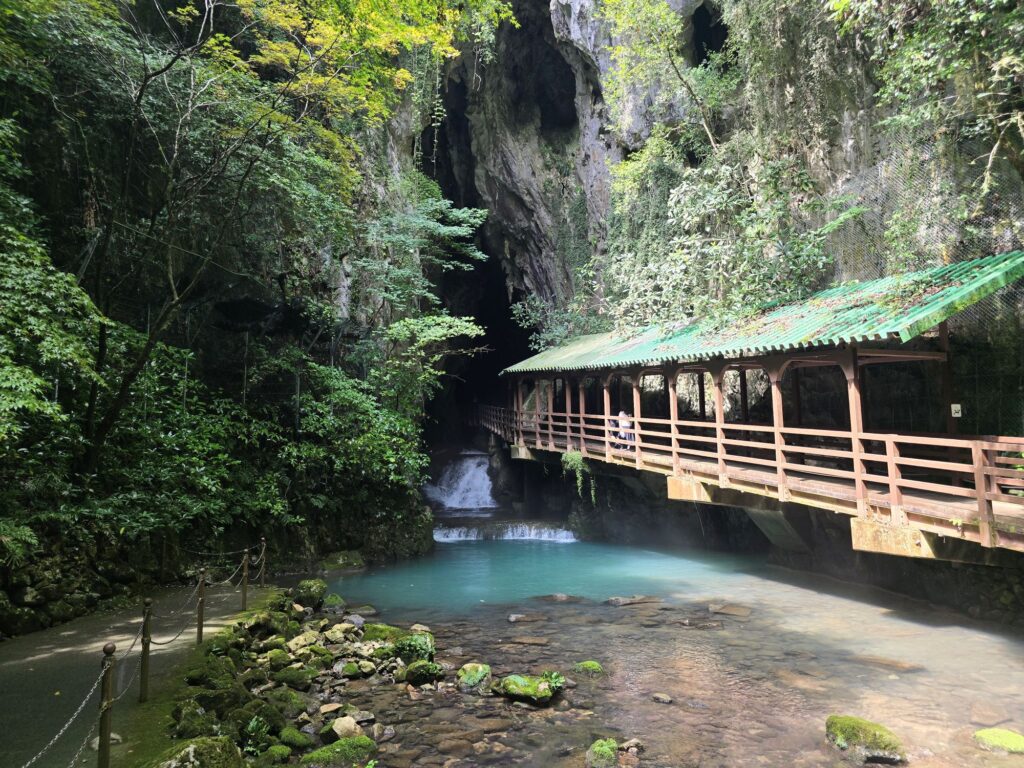
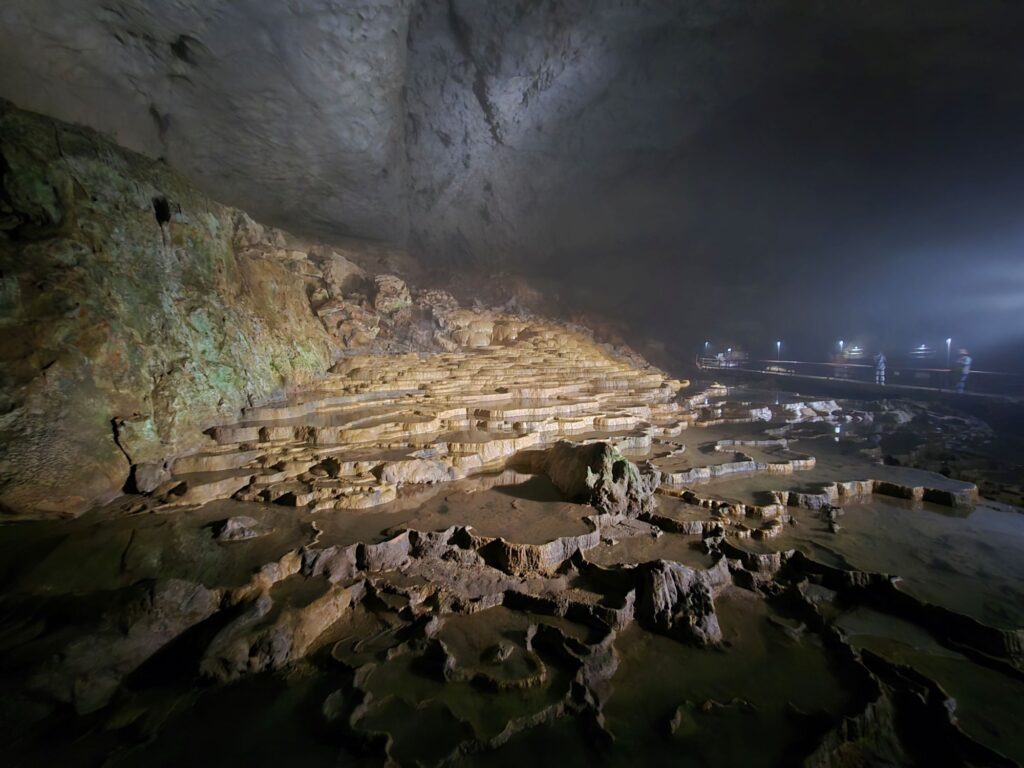
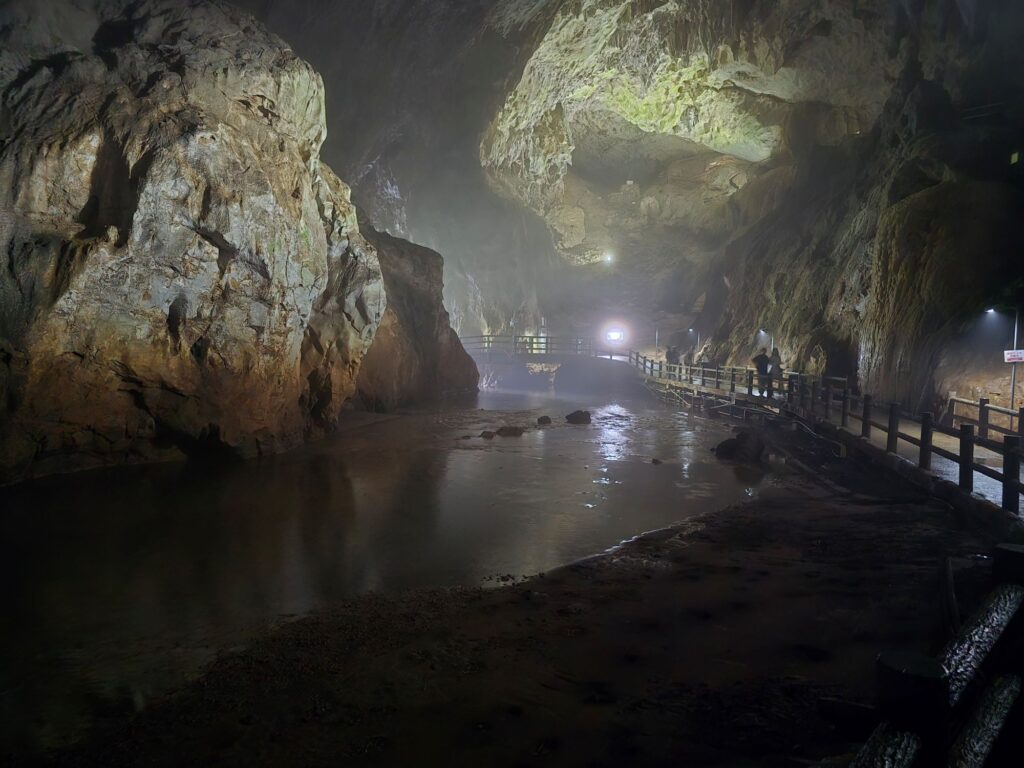
Figure 2: The Akiyoshidō (秋芳洞): left: the entrance; middle: the carved terraces and pools; right: the river in the cave.
The journey reminded me that whether we look up at the skies or down into the Earth, the spirit of discovery remains the same.
Captain out.